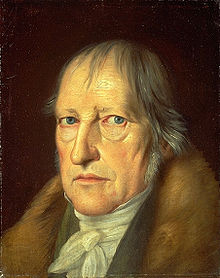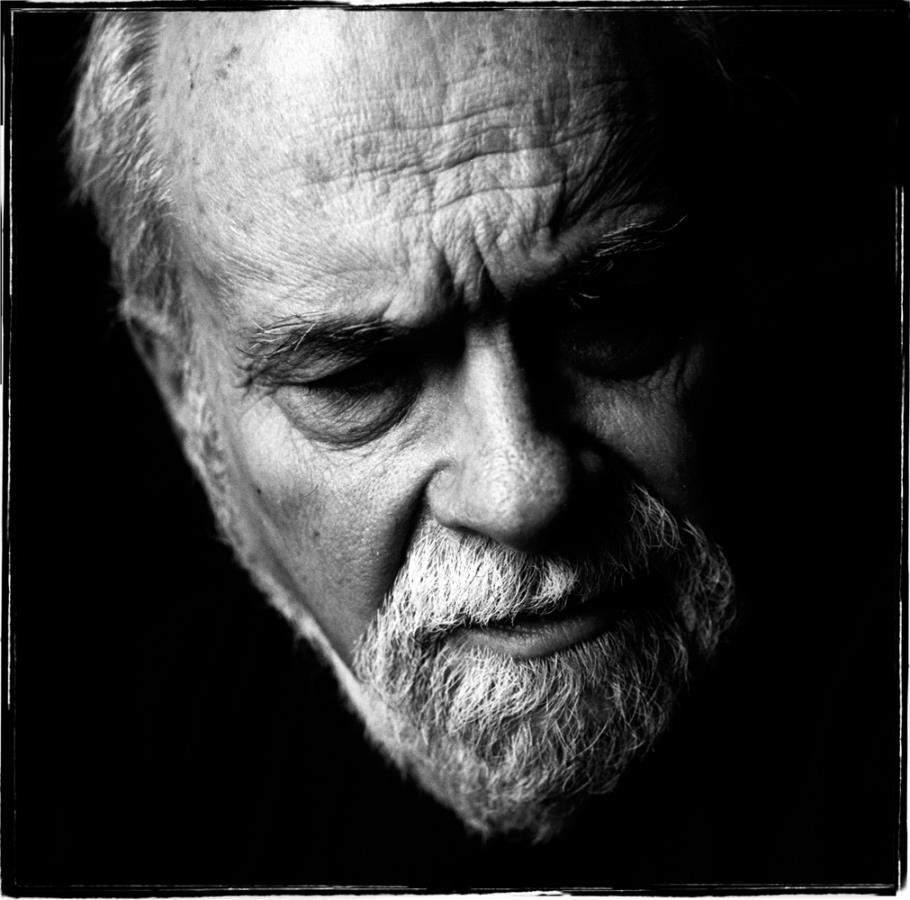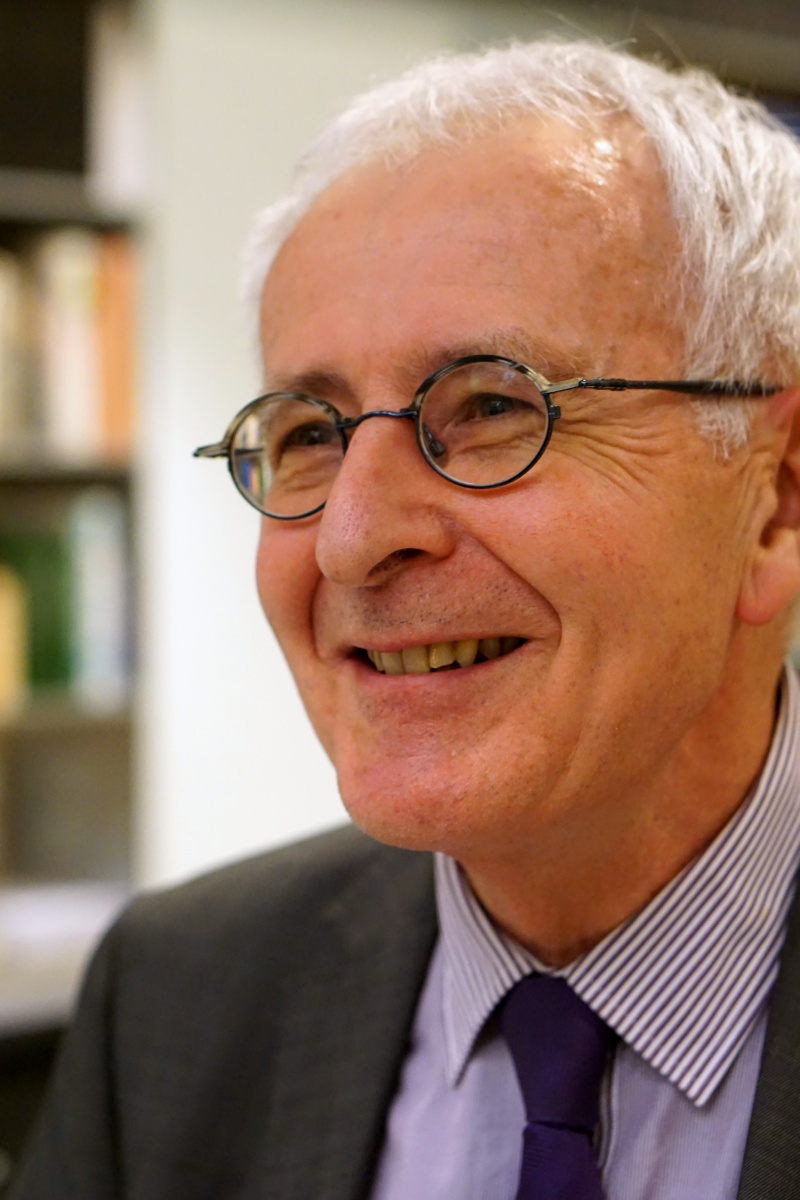Spirituality and the End of Art
Spirituality is a strange and mysterious beast that varies in appearance and essence for every individual in the world. It is the internal experience within each person, the chemical inter-workings of a complex whole. It is diametrically opposed to nature, yet nature is essential for its understanding. Over the course of human development, realization of the internal spirit manifested itself into organized groups and then religious institutions. Expressing human experience, whether it be about the internal or external worlds, is the cornerstone in human development. The term art is defined by realizing this internal world and expressing from it. This concept of spirit is put forth by Georg W. F. Hegel. In his work, The Philosophy of Fine Art, he argues that art is constantly innovating. Hegel outlines three stages that art history has progressed through: the symbolic, the classical, and the romantic stages. This third stage, the romantic, is an inward, more spiritual, one that recognizes the inadequacies of media and utilizes that weakness as a means of conveying the idea (Hegel 410-414). It is from this expression of spirit that Hegel arrives at his claim that art comes to an end, when “Spirit reaches its full self-realization, the need for images and symbols withers away, and with it goes the need for any art that uses physical means to express itself.[1]” Arthur Danto expands upon Hegel’s argument by suggesting art has met its end already in the form of the modern art movement, in which most anything can now be deemed art. The position of this essay, however, considers spirit not simply the end goal of the highest, most modern forms of art, but rather that spirituality is at the root of all artistic expression.
Before embarking on understanding the spiritual in art as it pertains to the recent past and present, historical context offers a foundation upon which to build. Hegel’s symbolic stage encapsulates the type of art being produced in early civilizations. According to Robert Lipsey, in his book An Art of Our Own, “Art accepted a special mission in virtually every preindustrial culture: to depict the sacred” (Lipsey 12). This mode of art’s blatant ties to spirituality signify that art originated from humanity’s curiosity and actions to make sense of existence. “The spiritual in art offers a transient experience of intensity, of a larger world and larger self. One begins to care again, reawakening to old longings, to remorse, perhaps to new thoughts and feelings, almost always to a clarified sense of direction” (Lipsey 16). In this way, the first artworks intended to reorient people, to pick them up and remind them of the vast unknown that is their reality. Hegel’s classical stage, which the Greeks and Romans utilized, focuses largely on the outside world and imitating reality with the objective, as mentioned earlier, of rendering the ideal form. Although it may seem limited from a spiritual point of view, the classical actually represents a deeply sacred venture to use one’s soul express physical perfection. The classical represents the pinnacle of skilled artistry in a search of the divine by means of creating works that echo the complexities of the forms that occur in the external world.
“From the period of the Renaissance, however, art gave itself a further aim that set it apart from religion, namely, ‘to be mimetic: to imitate an external reality, actual or possible’” (Houlgate 275). Romanticism marked a major transition in art’s history from a traditional motivation to achieve realism to capture nature’s essence to a more philosophical notion that the artist can use the medium to facilitate the idea or spirit central to a work’s creation. In this progression to the romantic stage, whether one views it as innovative or regressive, what was commonly held to art expanded. With it came a further dilution of art that seemingly continued to support Hegel’s argument that form would give way to spirit in art’s end.
However, with new scientific development, characterization of the divine in human form, which was common practice in art until the self-realizing philosophies of the 18th and 19th centuries, has largely been replaced by an abstract realization of the divine (although within modern religious institutions, the personification of the divine remains). According to Charlene Spretnak’s work The Spiritual Dynamic in Modern Art, “Anyone who accepts the validity of twenty-first century scientific discoveries about the dynamic interrelatedness of the physical world at the very subtle, subatomic levels, for instance, might consider it possible that we humans actually do live our lives embedded dynamically in a vibratory energetic whole, or anima mundi...” So spirituality can be viewed, with this new scientific framework, “as thousands of indigenous cultures and numerous ancient traditions in the East and the West have perceived” it throughout time (Spretnak 125). Nature—the physical, external world with which humanity engages—with all of its inter-workings, from the smallest of cells and amoebas to entire celestial bodies, are subject to a divine movement, a universal wind responsible for the connectivity of everything.
In his booklet Concerning the Spiritual in Art, Wassily Kandinsky—one of the fathers of modern art—agrees with Hegel about art being constantly innovating. At the end of his booklet, Kandinsky states, “We have before us the age of conscious creation, and this new spirit in painting is going hand in hand with the spirit of thought towards an epoch of great spiritual leaders” (Kandinsky 56). He is saying that now, with this new philosophy, art is always evolving, and the introspective stage that Hegel spoke of will lead to future artists being the most capable of expressing soul and spirit.
Wessel Stoker claims that the spiritual stage (Hegel’s romantic stage) coupled with outward, devotional stage (Hegel’s symbolic stage) are two parts of the same whole, “a connection...between externality and internality” (Stoker 39). Our recognition of this heavenly wind—which takes place within the internal reality—is the driving force behind artistic expression. And it is from Hegel’s romantic stage, with its recognition of the limits of media, that grand concepts like the divine can be expressed. “Spirituality of immanence is the most ancient response to the ineffable,” Spretnak states—who considers this response to have attracted “a large number of prominent contemporary artists” in the 20th and 21st centuries (Spretnak 151). Communing with nature has served as a fundamental path to recognizing spirituality. “Throughout time and across cultures, numerous people who are not attracted to any religious system have experienced a spiritual dimension of nature when they were able to quiet their mind, immerse themselves in nature’s presence, and open themselves in communion with this larger context” (151). How individuals react to such a communion is representative of their unique internal wirings and past experiences. Yet even though every view is different, commonalities can, and often are, found. Within these commonalities, often times making themselves manifest in emotions such as “wonder, awe, and gratitude... are most probably the primal origins of religion in all its diversity” (151-152). And it begins a cycle, according to Hegel’s philosophy in which art is the bridge between institutionalized religion and people: “an ideal of a people’s cultivation, the concept of a folk religion having art…as its integrating element. In this connection Hegel develops a characterization of the ‘ideal’… as the ‘determinate being’ or ‘existence’ of the idea in the work of art” (Gethmann-Siefert 37).
But art is always innovating, changing, as is the same with existential realization. Continuing off of the aforementioned topic of the “anima mundi,” Spretnak defines a spiritual orientation she refers to as “allusive spirituality.” She states, “…one finds a preference for expressions that allude to the ineffable and that seek to jar our mundane consciousness out of its sacred whole. This approach shares some common ground with theological systems that distrust all descriptions of God, insisting that the ineffable can be understood only in terms of what is not” (Spretnak 125). If there is this awesome cosmic force, and the only way to connect with it is internally, then there is no physical representation that can capture it. It is abstraction incarnate, a nebulous, empty, yet completely encapsulating entity that makes up the whole of all parts, humanity included. Negative theology appears the only way to speak to what universal spirit is by defining what it is not, “for example, the Divine is not anything that can be captured by our language systems” (125).
If art is innovating toward an end, as Hegel argues, what is that end? It has been suggested by Hegel that the end of art is the concentrated essence of spirit, of the soul that does not need any medium to convey its spirit. Stephen Houlgate illuminates on this issue in his section on Hegel, Arthur Danto and the end of art in Impact of Idealism, “If someone asks us ‘what is art?’, we might reply by simply pointing to an example—say, the Mona Lisa—and stating that this is art. The example, we might think, lets everyone see what art is without our having to give a philosophical definition of it” (Houlgate 272). But modern art has broken this simple pointing to a given painting to define art. “Warhol’s Brillo Boxes show…that there is not always a visible difference between art works and ordinary objects.” Warhol challenged the common understanding that art cannot be rooted in the external world. Since Warhol’s Brillo Boxes and actual, commercial Brillo boxes look alike, the difference between them, in Danto’s view, “must be conceptual, a difference that thought alone—in the form of philosophy—can clarify” (272). Unlike art works before this, Warhol’s Brillo Boxes forces one to abandon the concept that one can “‘understand the difference between art and reality in purely visual terms’ and requires one to seek a philosophical understanding of art’s nature” (272). Danto elaborates on the topic of art’s nature in his piece, The Disenfranchisement of Art. “When art internalizes its own history, when it becomes self-conscious of its history as it has come to be in our time, so that its consciousness of its history forms part of its nature, it is perhaps unavoidable that it should turn into philosophy at last.[2] And when it does so, well, in an important sense, art comes to an end” (Danto 27). This is profoundly important once pop art enters the fray. Hegel could not possibly have conceived of the state at which art is in the 1820s, which is why his concept of art as becoming concentrated essence is archaic, something Danto became aware of after seeing Warhol’s Brillo Boxes.
Hegel understood progress as an overall dialectic—a process of self-realization and understanding that ends in pure, absolute knowledge. Although it is initially preceded by a questioning of the component parts of religion and art, this state is ultimately achieved through philosophy. As Houlgate articulates, “… art ceases to have a history that is progressive and developmental is, Danto says, ‘what I mean by the end of art’. Art comes to an end, therefore, not by stopping altogether, but by becoming post-historical.” Danto claims that art reaches this end when it advances into the “age of radical pluralism”—meaning any expression can be viewed more or less as art—and makes it clear that, not art, but philosophy is capable of defining the essence of art. “In that sense, in Danto’s view, ‘the end of art consists in the coming to awareness of the true philosophical nature of art’” (Houlgate 278). This notion that “‘art ends with the advent of its own philosophy’” is fundamentally a Hegelian one and shows just how close Danto is to Hegel in philosophical thought. They both view art as some day being unnecessary, that pure essence will be made manifest without the need for brushes, word processors or song. However, this end requires both the internal and external worlds to unify. And since currently our unique internal wirings cannot be transmuted into something physical or transferable, art has not ended. It can be used to express and absorb and rationalize the outside world, but at least for now spirituality is a uniquely solitary entity, confined to each individual and their reality.
Understanding why humans express the internal and external worlds in art is only half of the discussion of art and spirituality. There is another half to the discussion that must be addressed: the connection between the work and the viewer. Kandinsky speaks to the judging of a work of art, “[A work] exists and has power to create spiritual atmosphere; and from this inner standpoint one judges whether it is a good work of art or a bad one” (Kandinsky 45). However, this idea that one can deem something good or bad based upon the viewer’s judgment, as if it were objective, is a limited definition for how individuals go about viewing art.
Within the entirety of the universe, human connection to spiritual is a mental one. Individuals all live, breathe and contribute to the same common divine movement, but they experience that movement independently of one another and never will be able to see the views of each other or at least cannot at this current point in time. Matthew Rowe, in Contemplations of the Spiritual in Art, discusses a time when a Christian friend of his visited an art exhibition and claimed to have a “deeply spiritual” connection with the work of Dan Flavin (Arya 13). Rowe claimed to have a spiritual connection as well, even though he is not a religious individual. He points out that this describing of works as spiritual “does not feel as if [the term is being used] figuratively or metaphysically. Rather, it seems a straightforwardly natural, if not plain accurate, term to apply…” The more individuals claim feeling spiritual connections with a work, the more that work enters into the light of good aesthetic taste and gets commonly referred to as art, even though it is up to the given individual to decide if that work resonates spiritually with themselves before it earns a title of an art-work.
The internal world that people all experience in their own, singular ways is the basis of artistic expression. Hegel hypothesized that the end of art will mean the end of needing to create a work of art in order to convey spirit, that essence can stand on its own. He argued that through art’s progression through the symbolic, classical and then romantic stages illustrates art’s trajectory that it comes to an end in itself, that some day essence and spirit—individual’s own spirits—will become realized as the last stage of art. However, in order for art to completely transform into pure essence, the internal world unique to each individual would seemingly need to morph into a universal one, a common consciousness. Danto took Hegel’s theory and pushed it further, suggesting that, with the advancement of modern and pop art, the end of art has been realized in the fact that anything now goes in the art world. By this definition, art has fallen out of the internal and into the external, gaining a heightened spiritual nature and irrelevance of form. However, this is a depressing end. It dilutes art down to an unrecognizable entity that is seemingly as vacuous and replete as the divine itself. Although Danto’s argument is a good one, it overlooks the other half of art: the viewer. Art has not reached its end because art’s very definition changes from person to person. Anything can be a work, a product, but it takes the spiritual engagement of the viewer for art to function. For as long as humanity has separate and unique mental inter-workings, art will not reach its end. In this way, spirituality is the end of art. It has been that way through all of Hegel’s stages and Danto’s end of art. It is a constant that characterizes art in a natural manner, something to which Matthew Rowe speaks, that there is a mutual recognition amongst people of what art is, even though their conceptions of it are all unique. Art has been utilized as a tool of expression to make sense of the reality humanity finds itself. From the internal to external worlds, the mystery of the universal spirit is at the very core of art’s mission of clarification, and as long as that enigma remains unsolved, art will not end.
Works Cited
1) Hegel, Georg Wilhelm Friedrich. Aesthetics: A Reader in Philosophy of the Arts. Ed. David Goldblatt and Lee Brown. Upper Saddle River, NJ: Prentice Hall/Pearson Education, 2011. 410-14. Print.
2) Kandinsky, Wassily. Concerning the Spiritual in Art, and Painting in Particular. 1912. A Version of the Sadleir Translation. Trans. Michael Sadleir. Comp. Francis Golffing. New York: Wittenborn, Schultz, 1947. Print.
3) Lipsey, Roger. An Art of Our Own: The Spiritual in Twentieth-century Art. Boston: Shambhala, 1988. Print.
4) Stoker, W. Where Heaven and Earth Meet: The Spiritual in the Art of Kandinsky, Rothko, Warhol, and Kiefer. Amsterdam: Rodopi, 2012. Print.
5) Hegel, Georg Wilhelm Friedrich. Lectures on the Philosophy of Art: The Hotho Transcript of the 1823 Berlin Lectures. Ed. Robert F. Brown. Oxford: Oxford UP, 2014. Print. Hegel, Georg Wilhelm Friedrich, and Annemarie Gethmann-Siefert. Lectures on the Philosophy of Art: The Hotho Transcript of the 1823 Berlin Lectures. Ed. Robert F. Brown. Oxford: Oxford UP, 2014. Print.
6) Spretnak, Charlene. The Spiritual Dynamic in Modern Art: Art History Reconsidered, 1800 to the Present. New York: Palgrave Macmillan, 2014. Print.
7) Danto, Arthur C. The Philosophical Disenfranchisement of Art. New York: Columbia UP, 1986. Print.
8) Houlgate, Stephen. "Hegel, Danto and the "End of Art"" Impact of Idealism: The Legacy of Post-kantian German Thought. Ed. Nicholas Boyle. Cambridge: Cambridge U, 2013. 264-92. Print.
9) Arya, Rina, ed. Contemplations of the Spiritual in Art. Bern: Peter Lang, 2013. Print.
[1] Prof. Trogan’s own words on Hegel’s The Philosophy of Fine Art.
[2] See Sarah Fanelli’s 40-meter long timeline of 20th century art in order to better understand this topic



